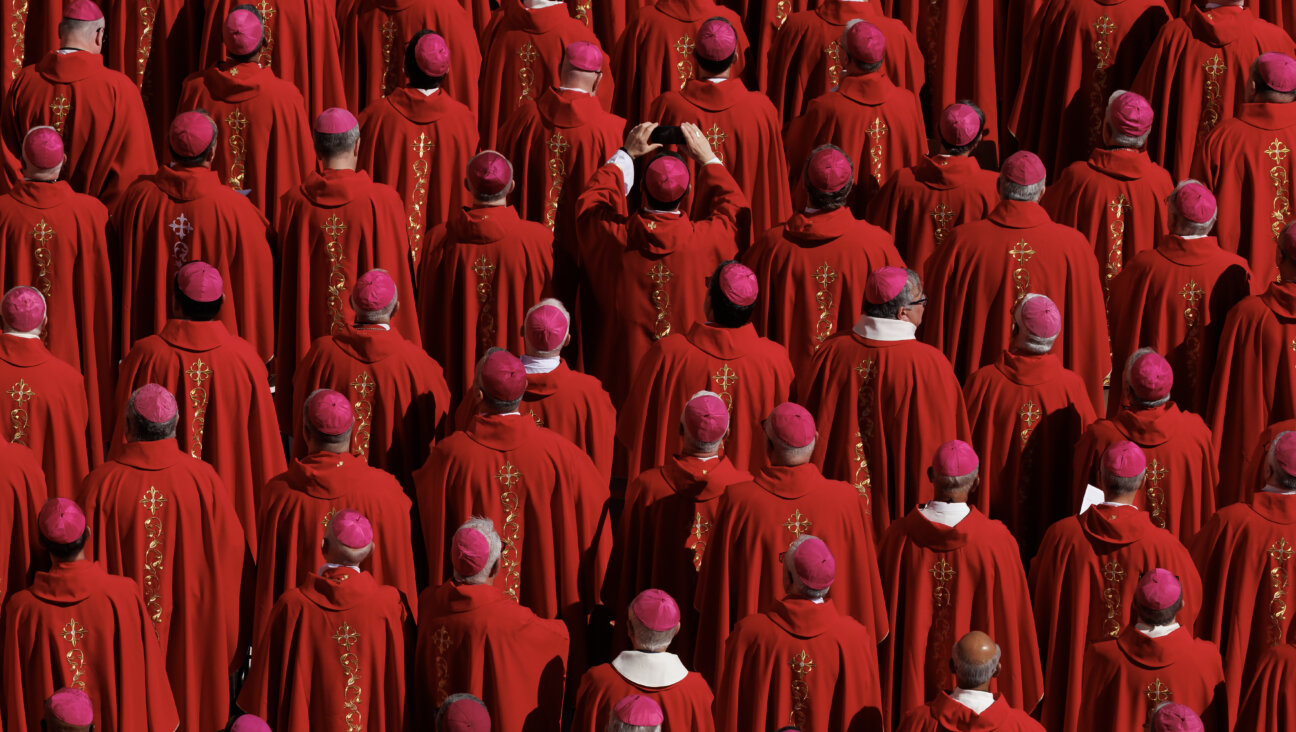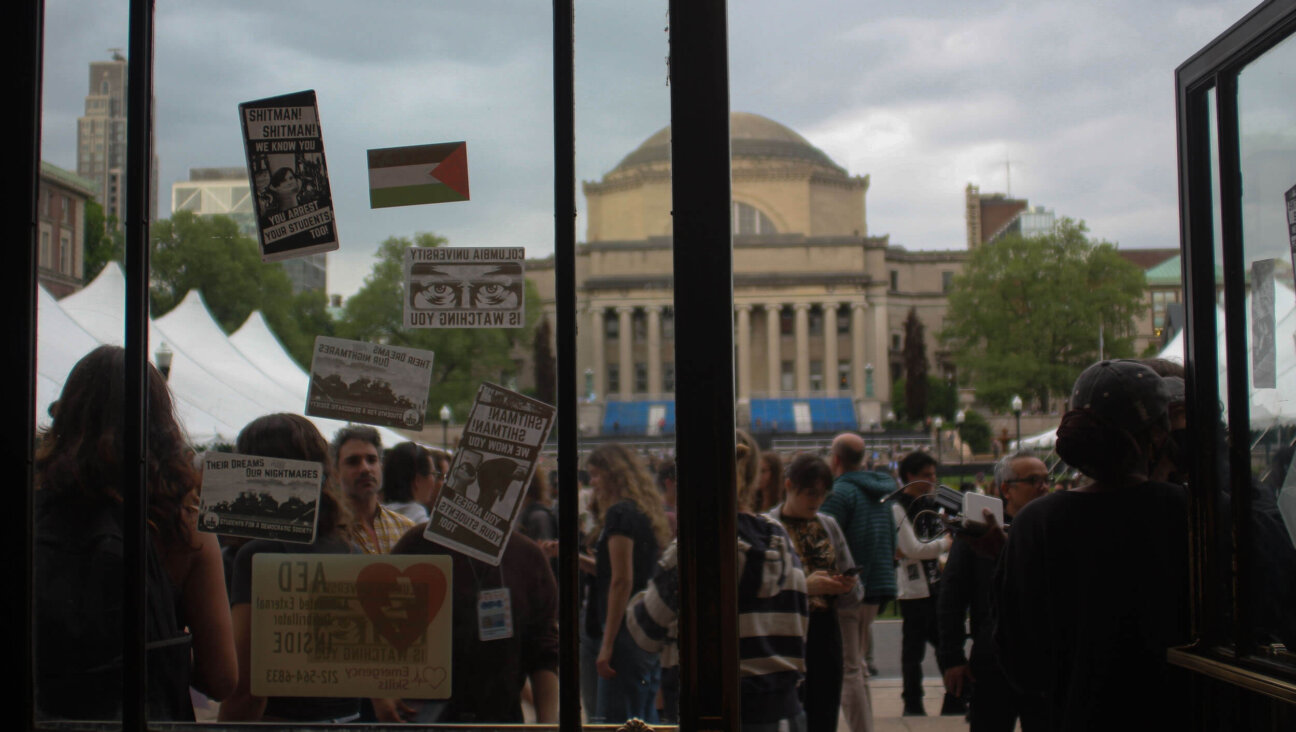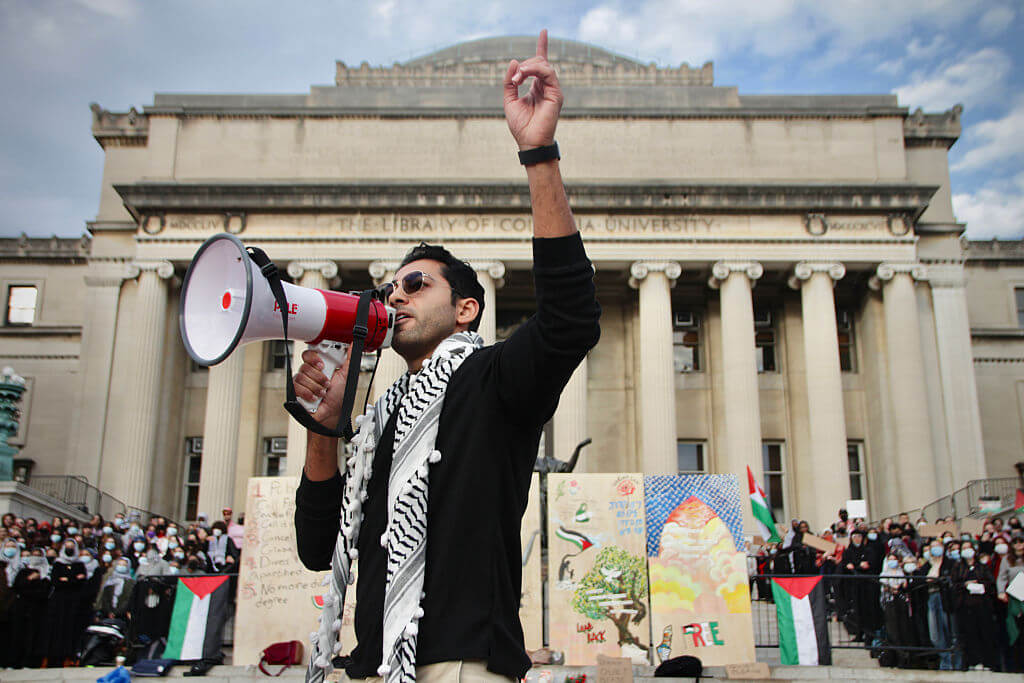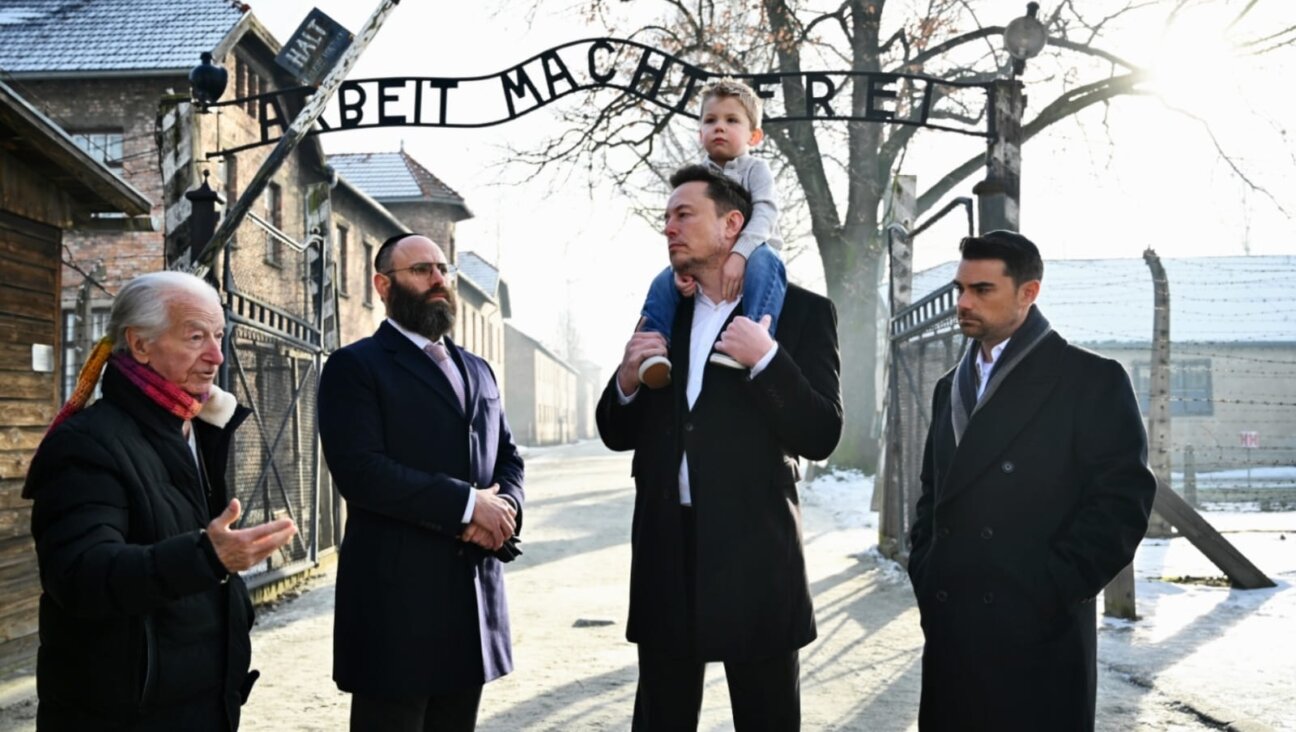Brutal Winter Drives Jewish Congregations Together in Bigger Tent

(Haaretz) — This has been an especially brutal winter for the Middle Atlantic region of the United States. At least a dozen winter storms have hit since November, each more punishing than the last.
A few weeks ago, one of these storms caused prolonged power outages across my county. Outages even impacted several congregations here, forcing some to consider canceling Shabbat services. Fortunately, my synagogue was in a position to help some of those congregations, and we offered space for their programming.
I do not write this post to celebrate my congregation’seagerness to help those in need, or our commitment to the principles of hakhnasat orhim (hospitality) and k’lal yisrael (Jewish peoplehood). Those qualities are, no doubt, worthy of celebration and emulation by us all, but I write instead to reflect on the atmosphere generated by fashioning in our synagogue, even if just for one Shabbat, a bigger than normal tent.
The feeling of having multiple communities representing different denominations and traditions under one roof, each doing Jewish its own way, infused our building not only with many more people than usual, but also a palpable sense of energy, dynamism, and vitality. Over Shabbat, nearly every room in the synagogue was filled with people enjoying different forms of spirited prayer, engaging learning, and creative programming. There were multiple study sessions discussing the weekly parashah. There was Torah Yoga and a “Movement and Music” minyan. We had traditional Shabbat worship, kids programming, and a special Shabbat service honoring youth involved in Camp Ramah and USY.
For the most part, each community ran its own programming, but being under one roof enabled folks to sample offerings that would have normally been out of physical range and emotional comfort zone. Multiple congregations even joined together at the end of Saturday morning services for a rousing Adon Olam and communal meal.
Naturally, everyone had to compromise on his or her ideal a little bit in order for this to happen. Most notably, almost no program was held in its perfect space. And accommodating more people and programs on short notice put unusual strain on my synagogue’s administrative and maintenance staff. Ideological compromises had to be worked out as well. For instance, out of deference to my community’s more traditional leanings, services that would have normally featured musical instruments did without guitars for the week.
But these obstacles were imminently surmountable. Some would have been avoided entirely with a little more notice. Some are, in effect, no different than conversations and compromises that happen on a regular basis within individual synagogues: accommodating the needs of diverse constituent groups and programs, enabling people of diverse ideologies to feel comfortable. Such discussions, whether happening within one community or between different communities, are healthy, valuable, and deeply Jewish. And, most notably, the effect of multiple communities coming together for Shabbat was worth the minor discomfort of these challenges.
There is a special vibrancy created when different Jewish constituencies gather together in the same space. We realize that despite our distinctive customs, we can still join for socializing and fellowship. We can value the beauty of each other’s practices and honor the fact that, while they may not work for us, they get the job done for certain populations, without feeling the need to judge their validity or feel threatened by them. We can, if we are open enough, even learn from and be inspired by approaches that we see as valid from our perspective but perhaps had not previously considered. Ultimately, it reminds us that while we are entitled to our differences, we Jews remain brothers and sisters.
In his book “Tomorrow’s Synagogue Today,” Rabbi Hayim Herring argues that collaboration of this type is the future of any successful synagogue. Today’s Jews – especially younger Jews – live in an environment where the Internet enables us to seek wisdom and meaning in a truly borderless context, and social media allows for communal gatherings free of institutional authoritarianism and sluggishness. Our era is marked by limitless consumer choice and easy access to personally tailored experiences of all sorts. As a result, many of us have come to see Jewish institutional boundaries as arbitrary and discouraging of involvement.
True, every community is entitled to its own style, culture, and traditions. And there are good reasons for some of the borders that divide us: It is important for communities to retain a sense of their own identity, and each of us will inevitably gravitate to communities that best reflect our personalities and meet our needs. But there are inevitably times when each of us needs something Jewish that our usual synagogue is not equipped to offer. Having many options in the same space ensures more peoplewill be accommodated more of the time.
More importantly, our synagogues often let borders distract from the fact that we are actually all in the same business: creating Jewish community, providing joyous and meaningful Jewish experiences, and repairing the world. It sometimes makes sense to go it alone in the service of those missions. Frequently, though, we can achieve more together than apart.
Synagogues have little to fear or lose through collaboration, and have much to gain. Hillel serves as a paragon of this reality. I was a committed Conservative Jew when I became involved with the Columbia/Barnard Hillel. I remain a committed Conservative Jew today, but my beliefs and Jewish ties are richer and deeper for participating in a diverse, pluralistic, and inclusive Jewish communal project. Why can our synagogues not emulate that successful model? Why should they not?
So if you ask me, I’d be OK with another snowstorm bringing us together. All things being equal, though, let’s skip the snow, and just get together.
Michael Knopf is the Assistant Rabbi of Har Zion Temple in Penn Valley, Pa.
The Forward is free to read, but it isn’t free to produce

I hope you appreciated this article. Before you go, I’d like to ask you to please support the Forward.
Now more than ever, American Jews need independent news they can trust, with reporting driven by truth, not ideology. We serve you, not any ideological agenda.
At a time when other newsrooms are closing or cutting back, the Forward has removed its paywall and invested additional resources to report on the ground from Israel and around the U.S. on the impact of the war, rising antisemitism and polarized discourse.
This is a great time to support independent Jewish journalism you rely on. Make a gift today!
— Rachel Fishman Feddersen, Publisher and CEO
Support our mission to tell the Jewish story fully and fairly.
Most Popular
- 1

Fast Forward Ye debuts ‘Heil Hitler’ music video that includes a sample of a Hitler speech
- 2

Culture Cardinals are Catholic, not Jewish — so why do they all wear yarmulkes?
- 3

News School Israel trip turns ‘terrifying’ for LA students attacked by Israeli teens
- 4

Fast Forward Student suspended for ‘F— the Jews’ video defends himself on antisemitic podcast
In Case You Missed It
-

Fast Forward Police clash with pro-Palestinian protesters in Brooklyn as Columbia library takeover fallout continues
-

Opinion This week proved it: Trump’s approach to antisemitism at Columbia is horribly ineffective
-

Yiddish קאָנצערט לכּבֿוד דעם ייִדישן שרײַבער און רעדאַקטאָר באָריס סאַנדלערConcert honoring Yiddish writer and editor Boris Sandler
דער בעל־שׂימחה האָט יאָרן לאַנג געדינט ווי דער רעדאַקטאָר פֿונעם ייִדישן פֿאָרווערטס.
-

Fast Forward Trump’s new pick for surgeon general blames the Nazis for pesticides on our food
-
Shop the Forward Store
100% of profits support our journalism
Republish This Story
Please read before republishing
We’re happy to make this story available to republish for free, unless it originated with JTA, Haaretz or another publication (as indicated on the article) and as long as you follow our guidelines.
You must comply with the following:
- Credit the Forward
- Retain our pixel
- Preserve our canonical link in Google search
- Add a noindex tag in Google search
See our full guidelines for more information, and this guide for detail about canonical URLs.
To republish, copy the HTML by clicking on the yellow button to the right; it includes our tracking pixel, all paragraph styles and hyperlinks, the author byline and credit to the Forward. It does not include images; to avoid copyright violations, you must add them manually, following our guidelines. Please email us at [email protected], subject line “republish,” with any questions or to let us know what stories you’re picking up.















